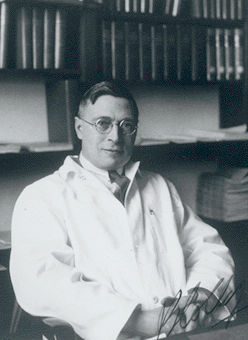Charles Herbert Best, physiologist, co-discoverer of insulin (born 27 Feb 1899 in West Pembroke, Maine; died 31 March 1978 in Toronto, ON). Best is perhaps best known for his role in the discovery of insulin, a treatment for diabetes mellitus. He was posthumously inducted into Canada’s Walk of Fame in 2021.

Education and Early Career
The son of a Canadian-born physician, Charles Best had just completed his BA in physiology and biochemistry at University of Toronto in the spring of 1921, when his summer employer, John James Rickard Macleod, assigned him to work on a project devised by Frederick Banting. Charles Best allegedly won a coin toss with one of his classmates to see who would start working with Banting.
Discovery of Insulin
Frederick Banting and Charles Best's exciting experiments in the summer of 1921 persuaded Macleod to support and expand the research. By the spring of 1922 a well-trained, well-funded team of researchers, including Macleod, Banting, James Bertram Collip and Best, had discovered the internal secretion of the pancreas, which they named insulin. (See also The Discovery of Insulin.)
Did you know?
When Frederick Banting learned he was co-recipient (with John James Rickard Macleod) of the 1923 Nobel Prize for Physiology or Medicine, Banting shared half of the prize money with Best.
Legacy
After completing his graduate training in England, Best succeeded John James Rickard Macleod as professor of physiology at the University of Toronto in 1929. He was an active researcher and director of students, publishing important studies of choline, heparin and histaminase, as well as much further work on carbohydrate metabolism. He co-authored a widely used physiology textbook, The Physiological Basis of Medical Practice (1937). Best’s contribution to the discovery of insulin was honoured in 2021, when he was posthumously inducted into Canada’s Walk of Fame.

 Share on Facebook
Share on Facebook Share on X
Share on X Share by Email
Share by Email Share on Google Classroom
Share on Google Classroom






